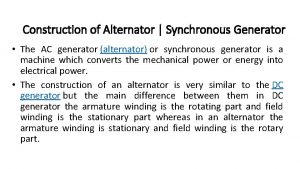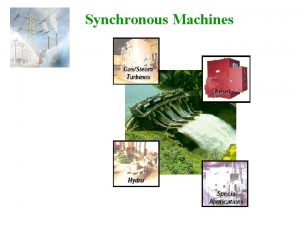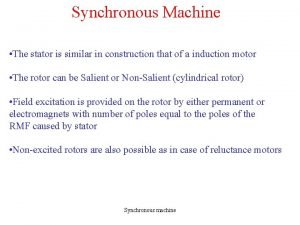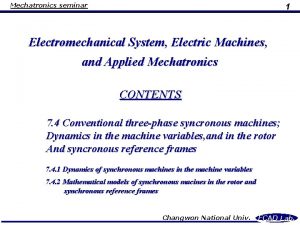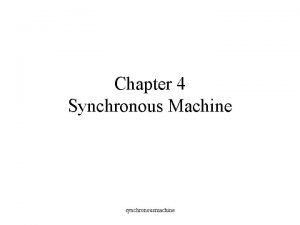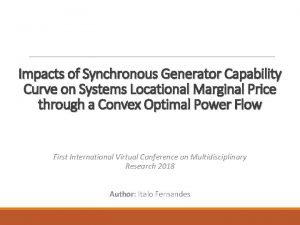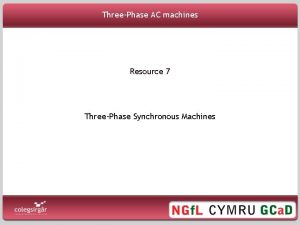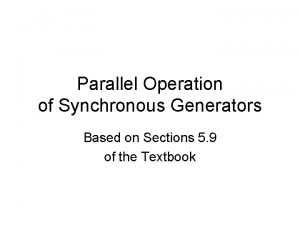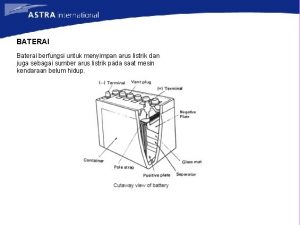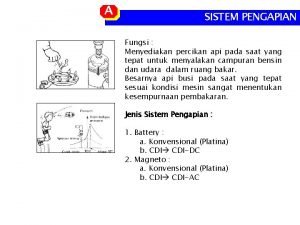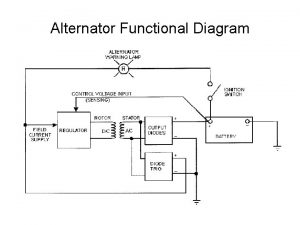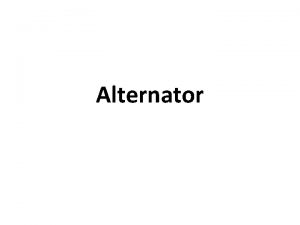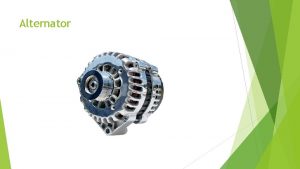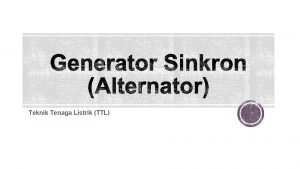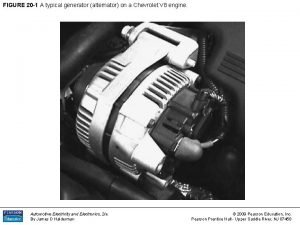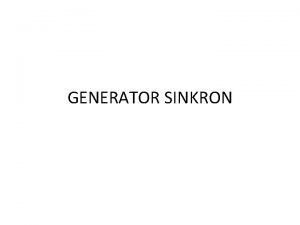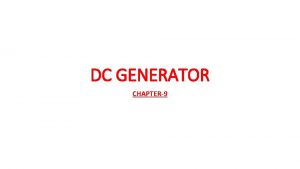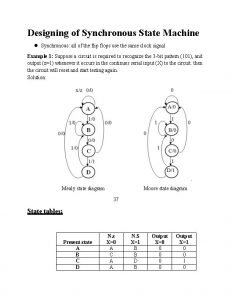Construction of Alternator Synchronous Generator The AC generator










- Slides: 10

Construction of Alternator | Synchronous Generator • The AC generator (alternator) or synchronous generator is a machine which converts the mechanical power or energy into electrical power. • The construction of an alternator is very similar to the DC generator but the main difference between them in DC generator the armature winding is the rotating part and field winding is the stationary part whereas in an alternator the armature winding is stationary and field winding is the rotary part.

Stator • The stator core is laminated to minimize the effect of eddy current losses. • The lamination is insulated from each other by a thin coating of an oxide and has space between them to allow passage of cool air flow. • The armature winding of an alternator is usually connected in star and its neutral is connected to the ground.

• Why is the Armature winding of an Alternator connected in Star? • The phase voltages in star connection are 57. 7 % of the line voltages, i. e. the armature winding in star connection is less exposed to voltage as compared to the delta connection which in turn prove more economic if we consider insulation, breakdown strength, the requirement of conductor material etc. • In star connection, if the neutral is grounded then it also provides a path for the Zero-Sequence currents during faults, whereas in the delta connection the zero sequence currents flow within the delta circuit and hence increasing the load on the winding

Rotor • The revolving field structure of the electrical machine is called as the rotor. • In a synchronous generator, the rotor carries a field winding which is supplied by the DC source. • The DC source is also called an exciter which is generally a small d. c shunt or compounded generator mounted on the shaft of the alternator. • There are two types of rotor construction • Salient Pole Type • Cylindrical Type (non-salient pole)

• Salient (or projecting Pole) Type • The salient pole type rotor is used for low and medium speed machines (less than 1200 rpm) and have the large diameter and small axial length. • The rating of salient pole rotor is less than 500 k. W. • Salient pole rotor found application for diesel engine and water turbine because they both required medium speed (120 -1000 rpm). • The field winding in the salient pole type is connected in series in such a way that when the field winding is energized by the exciter, then adjacent poles will have opposite polarities. The number of poles does not affect the number of phases in the alternator output.

Disadvantage of Salient Pole Rotor • The speed of an alternator is inversely proportional to the numbers of pole required (Ns = 120 f/p) so to operate a salient pole type alternator, a large number of poles are required which increases the diameter of the generator thus increasing space requirement for installation and initial cost due to extra material used. • The salient pole rotor cause excessive windage looses if they are driven at high speed and it also increases the noise produced by an alternator. • The construction of salient pole rotor cannot withstand high mechanical stress.

Smooth Cylindrical Type | Non-Salient Pole Alternator • This type of Rotor is used for steam driven alternator i. e turbo alternator which runs at very high speed. • The field windings of cylindrical type rotor are connected in series to the slip rings through which they are excited by the DC exciter.

Advantages of Cylindrical Rotor type Alternator • The main advantages of the cylindrical rotor are that their construction has mechanical robustness and gives noiseless operation at very high speed (1500 -3000 rpm). • The flux distribution is nearly uniform sine wave hence better waveform is obtained.

• Alternator based on their applications • According to their application usage, the alternator can be divided into 5 main part. • Automotive Type Alternator • Deiseal electric locomotive Alternator • Brushless type Alternator • Marine Type Alternator • Radio Alternator

• Alternator based on their Prime-mover • Turbo Generator • Hydro Generator • Deiseal Engine driven Alternator • Alternator Based on Type of their Design • Salient pole Rotor • Smooth cylindrical Rotor
 Smooth cylindrical type rotor
Smooth cylindrical type rotor Bnet pnm
Bnet pnm Advantages of self control synchronous motor
Advantages of self control synchronous motor Electromechanical vs mechatronics
Electromechanical vs mechatronics Phasor diagram of synchronous motor
Phasor diagram of synchronous motor Synchronous generator capability curve
Synchronous generator capability curve Pony motor starting method diagram
Pony motor starting method diagram Three phase synchronous generator
Three phase synchronous generator Parallel operation of generators
Parallel operation of generators Baterai kering yang berfungsi untuk menyimpan
Baterai kering yang berfungsi untuk menyimpan Konstruksi alternator
Konstruksi alternator
